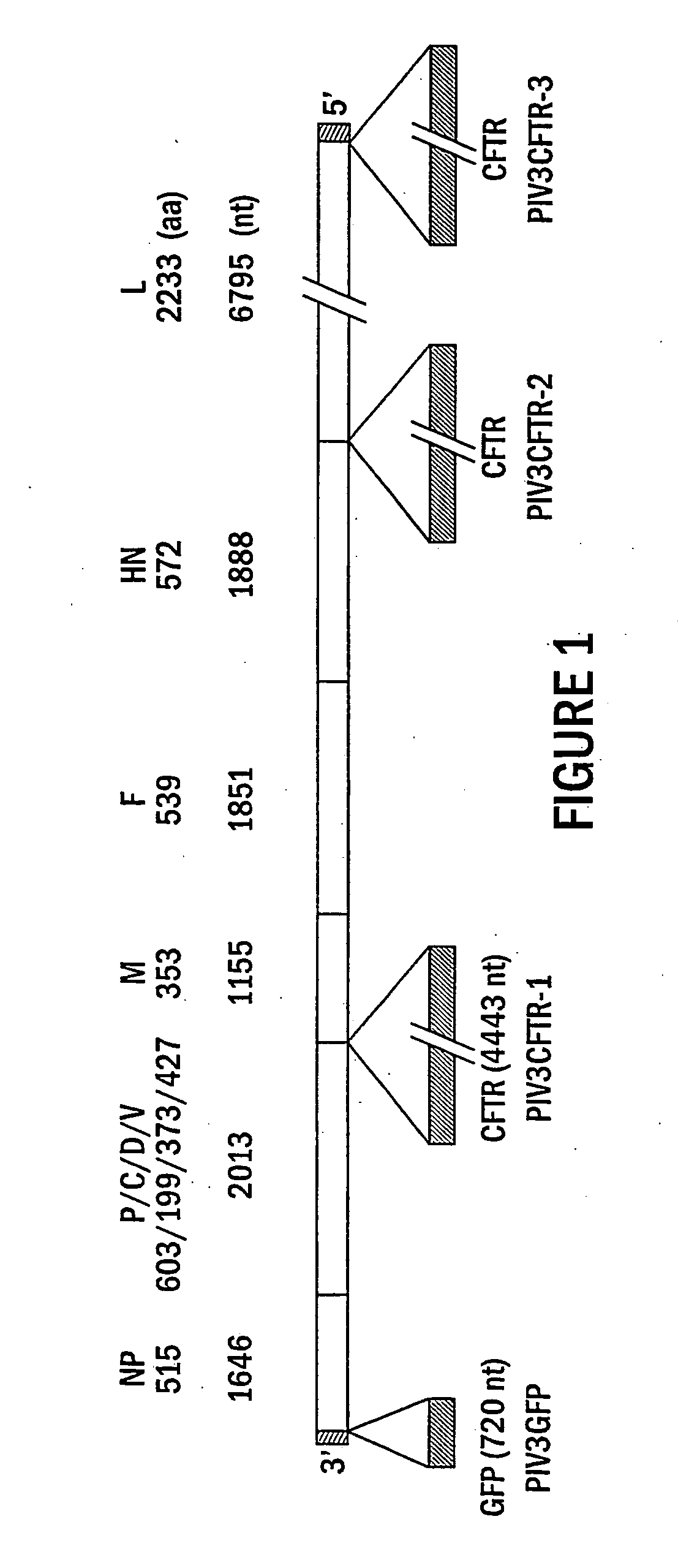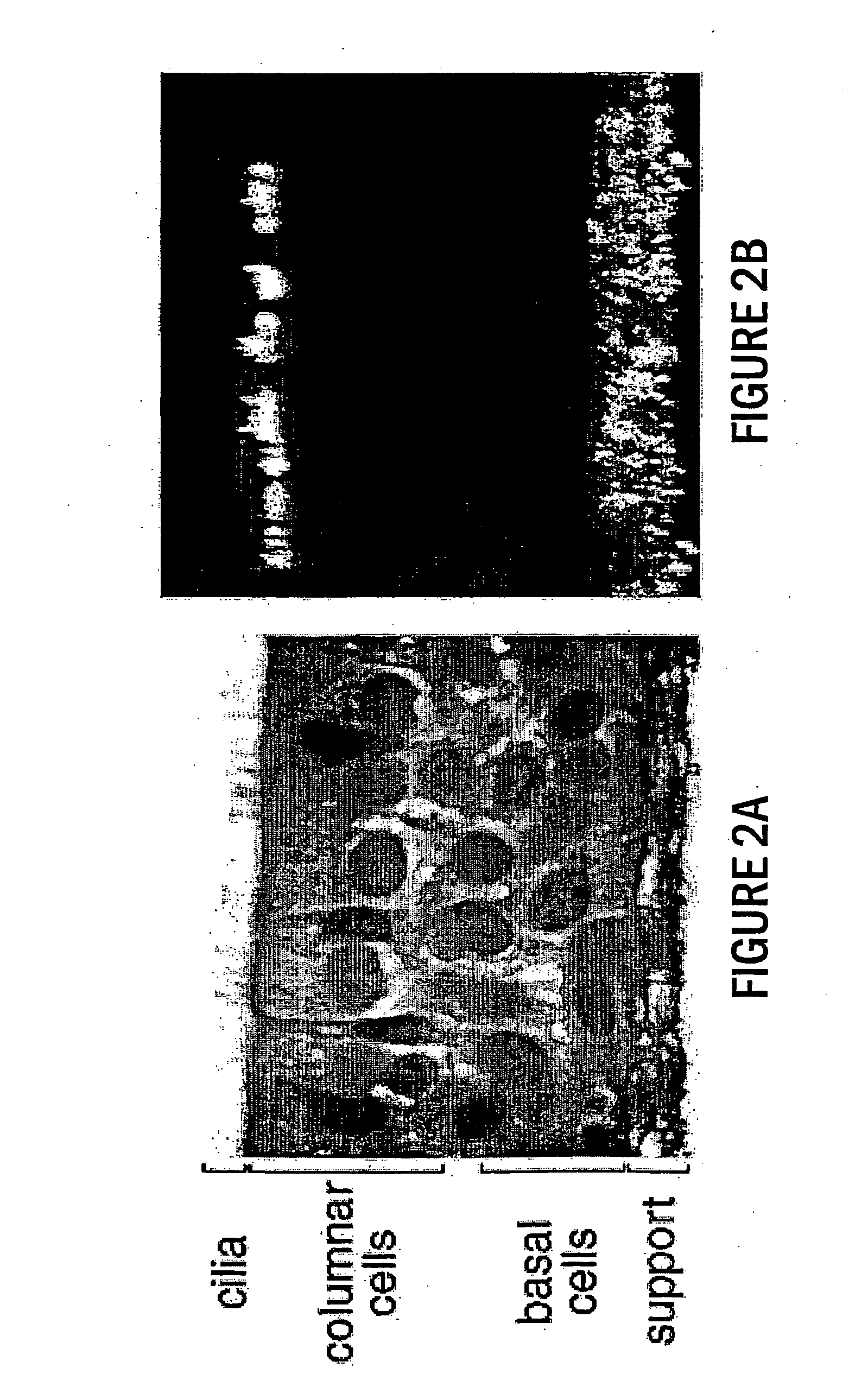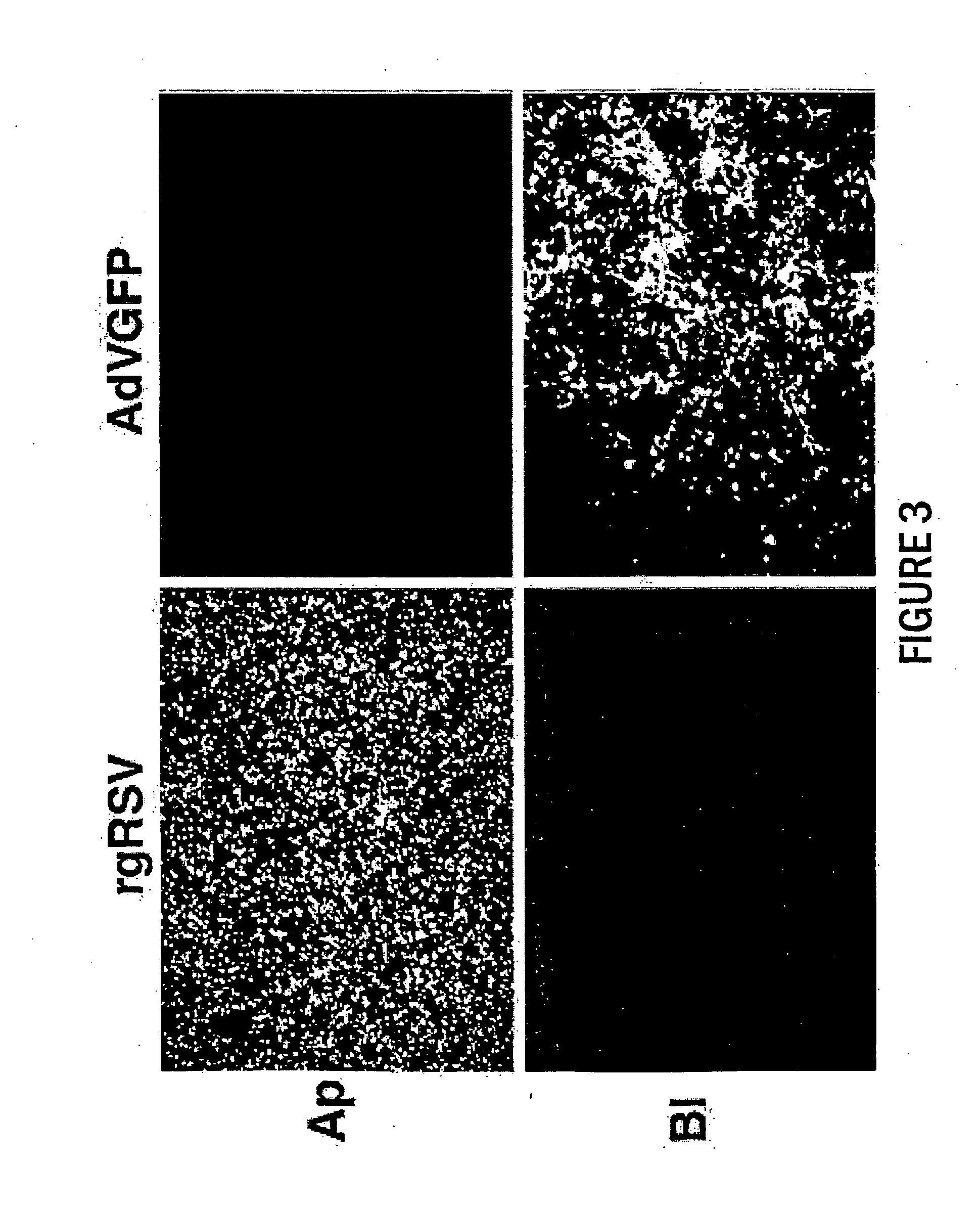Paramyxoviruses as gene transfer vectors to lung cells
a technology of paramyxovirus and gene transfer vector, which is applied in the field of infectious recombinant viral vectors, can solve the problems of short protection time, inability to replicate rsv in vitro, and limited resistance to serum-neutralizing antibodies
- Summary
- Abstract
- Description
- Claims
- Application Information
AI Technical Summary
Benefits of technology
Problems solved by technology
Method used
Image
Examples
example 1
Respiratory Syncytial Virus Infects Ciliated Cells of Airway Epithelium Via the Lumenal Membrane
[0151] In the present study, we have investigated the mechanism of RSV infection using a model of well-differentiated (WD) human airway epithelium (HAE). WD HAE cultures are derived directly from human lung epithelial tissue and, following seeding in vitro, grow to establish a multilayer, polarized, differentiated cell culture that closely resembles the airway epithelium in vivo with regard to morphology and functions including mucus production and ciliary motion (Matsui et al. (1998) J. Clin. Investig. 102:1125-1131; Pickles et al. (1998) J. Virol. 72:6014-6023). RSV infection was performed using a recombinant RSV that expresses green fluorescent protein (rgRSV), providing the means to directly visualize infected cells (Techaarpornkul et al. (2001) J. Virol. 75:6825-6834). This showed that RSV preferentially targets the ciliated cells of the airway epithelium, and that infection (and su...
example 2
Human Parainfluenza Virus Type 3 Infects Ciliated Cells of Airway Epithelium Via the Lumenal Membrane
[0179] One of the major barriers to the successful delivery of transgenes to the airway epithelium is the inefficiency of vector entry across the apical surface after intralumenal delivery. The ciliated columnar epithelial cells of both the surface epithelium and the submucosal glands are considered to be the cell-type that require correction in CF lung disease and the ability to target CFTR expression in these cell-types is highly desirable. In an attempt to achieve this goal, we have tested a common respiratory pathogen, human parainfluenza virus type 3 (hPIV3) for its ability to infect airway epithelium after intralumenal delivery. A recombinant PIV3 (hPIV3GFP, see FIG. 1 for genome organization) was constructed that expressed a reporter green fluorescent protein (GFP) transgene that allowed for monitoring infection with time. In this study we have used a well-characterized in vi...
example 3
Pseudotyped EIAV Lentiviral Vectors Transduce Polarized MDCK Cells from the Apical Surface
[0184] EIAV lentiviral vectors have been successfully pseudotyped with all three membrane proteins, HA, M2, and NA of influenza virus type A. The pseudotyped vector was found to transduce polarized MDCK cells from the apical surface as depicted in FIG. 10. In contrast, EIAV pseudotyped with vesicular stomatitis virus protein G (VSV-G) only transduced from the basolateral surface. Furthermore, the apical transduction of polarized MDCK cells by influenza pseudotyped EIAV vectors was found to be sensitive to neuramidase III treatment, indicating that apical surface sialic acid residues are involved the attachment / entry pathway(s).
PUM
| Property | Measurement | Unit |
|---|---|---|
| length | aaaaa | aaaaa |
| length | aaaaa | aaaaa |
| volume | aaaaa | aaaaa |
Abstract
Description
Claims
Application Information
 Login to View More
Login to View More - R&D
- Intellectual Property
- Life Sciences
- Materials
- Tech Scout
- Unparalleled Data Quality
- Higher Quality Content
- 60% Fewer Hallucinations
Browse by: Latest US Patents, China's latest patents, Technical Efficacy Thesaurus, Application Domain, Technology Topic, Popular Technical Reports.
© 2025 PatSnap. All rights reserved.Legal|Privacy policy|Modern Slavery Act Transparency Statement|Sitemap|About US| Contact US: help@patsnap.com



